Table of Contents
Introduction
Agriculture has always been the pillar of human society, but contemporary agriculture is not only based on manual labor and old-fashioned tools anymore. Now, farm equipment is all-important in determining agricultural productivity, lowering manual labor, and saving precious time.
From localized farmers to big commercial agriculture companies, sophisticated machines like seeders, ploughs, irrigation, new tractors, and reapers have revolutionized the way farmland is operated.
Farmers are also concerned with cost-efficiency, durability, and performance prior to the investment in equipment, hence the need to know what equipment truly produces the best output.
Affordability is one of the biggest issues for any farmer. Equipment such as harvesters, which are essential for effective harvesting, has varying costs, and knowing the price of the harvester before buying is a necessity.
Likewise, tractors have become multi-purpose machines that not only till fields but also facilitate transportation and contemporary attachments, further contributing to farm productivity.
With increased competitiveness in agriculture, farmers are required to use tried equipment that offers both cost and performance while aiding them in attaining greater yields.
This blog goes in-depth into the 7 proven farm equipment that were put to test in actual conditions and delivered consistent outcomes in terms of efficiency and profitability.
We will examine their advantages, real-world usage, drawbacks, and intelligent purchasing advice, along with reviews on the optimal harvester price and specifications of new tractors.
Whether you are an agriculture student, a farmer seeking an upgrade, or someone interested in learning about advanced farm technologies, this comprehensive guide will assist you in knowing how the proper equipment can improve farming practices and ensure a better future.
Benefits of Equipment for Farmers
It is not merely about planting seeds and waiting to reap the harvest; it’s about optimizing productivity, reducing effort, and employing technology efficiently. The appropriate equipment for farmers will allow these objectives to be accomplished at affordable costs.
In what follows, we examine the ultimate advantages that make agriculture machinery a necessity in present farming techniques.
1. Enhanced Productivity and Efficiency
The very first and top benefit of new machinery for farmers is the immense boost in productivity. Activities that were taking days or weeks through manual effort can now be done within hours with sophisticated machines.
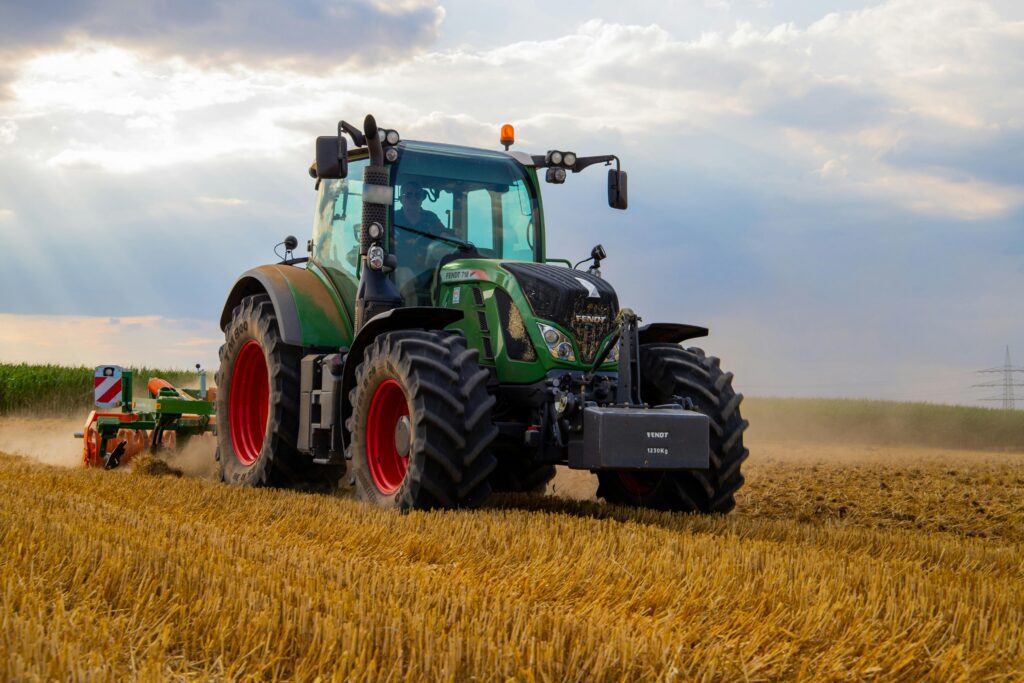
New tractors with precision attachments, for example, assist in ploughing, sowing, and fertilizer distribution much more effectively than before. In the same way, the use of a combine harvester does not only reap and thresh crops but also conserves post-harvest time.
When farmers view the price of a harvester, they naturally perceive it as a long-term investment since the speed and efficiency of such equipment literally mean more output and profit margins.
2. Lower Dependence on Labor
The rural regions tend to have shortages of labor during the peak agricultural seasons, resulting in slowed-down farming operations. With mechanization, farmers don’t have to rely solely on large groups of laborers.
Equipment such as rotary tillers, seeders, and power weeders decrease reliance on hand work while increasing accuracy. For instance, a farmer utilizing new tractors with attachments can ready a large piece of ground in a quarter of the time, cutting down on delay in sowing.
This decrease in labor dependency guarantees timely operation, which is paramount for crop success and ultimately reduces overall labor cost.
3. Enhanced Crop Quality and Yield
An additional fundamental advantage of equipment investment for farmers is the apparent enhancement in crop quality and yield. If planting, irrigation, fertilization, and harvesting processes are executed with precision equipment, the plants are provided with the correct treatment at the right time.
A harvester, for instance, minimizes grain wastage when cutting, whereas contemporary planters guarantee seeds are planted uniformly at the appropriate depth.
Pre-checking the price of the harvester ensures farmers select the most efficient model within their means, with minimal wastage and higher-quality produce. Such accuracy increases yields and enhances market competitiveness.
4. Cost Savings in the Long Run
At initial impression, farming machines can be pricey, yet they turn out to be long-term cost savers. An agriculturist investing in new tractors or a reaper could spend more initially, but the efficiency and the saved labor cost translate into huge gains every year.
Additionally, punctual operations minimize the risk of crop losses due to tardiness or inefficiency. Farmers tend to compare the prices of harvesters not only in terms of sticker price but on how fuel-efficient, robust, and service-intensive they are.
Such equipment lasts for years with proper care and maintenance, making them an extremely lucrative investment.
5. Sustainability and Contemporary Farming Practices
Modern farming is not only about producing more but also conserving the environment and maintaining long-term soil fertility. Farmers’ equipment today is made with sustainability in mind.
Equipment such as drip irrigation systems provide water efficiency, whereas high-tech tractors provide low soil compaction by controlled traffic farming. Most new tractors are also being equipped with green engines that lower emissions.
Similarly, harvesters are manufactured so that they reduce grain losses, and so food production becomes sustainable. Well-invested farmers not only enhance productivity but also make farming environmentally friendly.
Techniques: 7 Proven Equipment for Farmers
Modern farming survives on the coexistence of old traditions and new technology. With agriculture confronting issues such as uncertain weather, increasing costs, and labor shortages, selecting the proper tools for farmers is more critical than before.
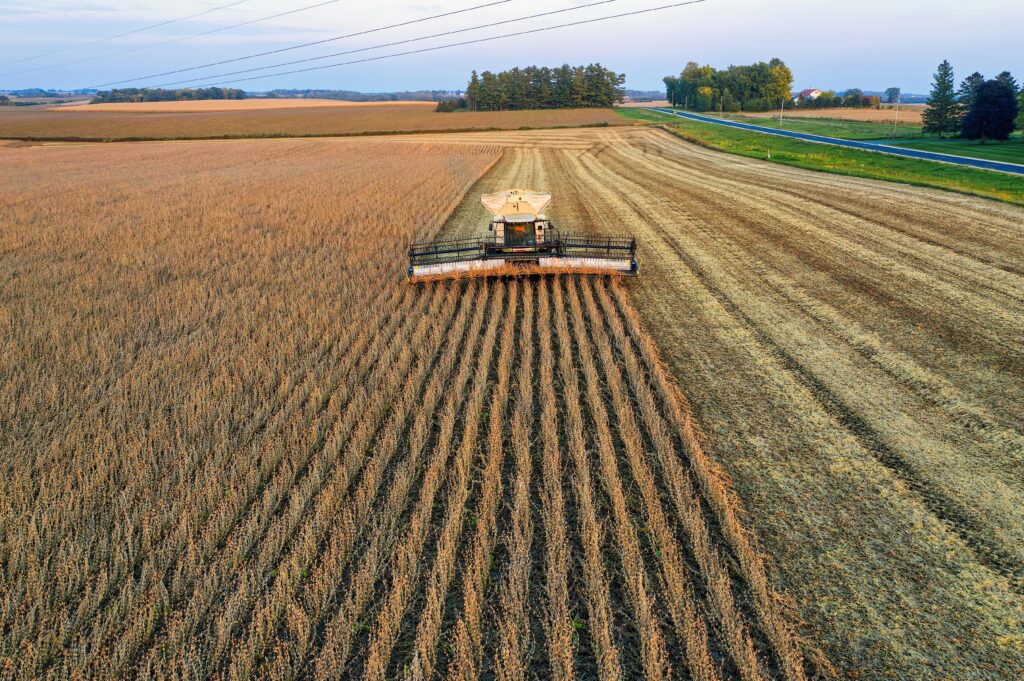
The following are the seven tried and tested machines that dramatically enhance efficiency and profitability.
1. Tractors – The Backbone of Modern Farming
Tractors are perhaps the most critical machinery for farmers. They have developed from rudimentary machines to multi-purpose agricultural equipment that assist in ploughing, tilling, sowing, towing, and even irrigation operations.
Tractors with good fuel efficiency, powerful engines, and compatibility with current attachments are what farmers nowadays seek. Not only do these tractors save time but also decrease manual labor, making them essential in commercial farming.
What is most important about tractors is that they can be matched to different jobs. For instance, in a particular season, a farmer might employ the tractor for ploughing, whereas the following season it can be employed with a seed drill or trailer.
This makes maximum return on investment assured. Even though tractors are a costly investment, most manufacturers today offer easy financing options so that new tractors can be afforded by small as well as large-scale farmers.
2. Combine Harvesters – Time and Crop Saving
Combine harvesting is one of the most important operations in agriculture, and combine harvesters have been a game-changer. A combine harvester does three operations at a time: reaping, threshing, and winnowing.
For the farmer, it translates into less labor, less grain loss, and faster turnaround times between harvest and field preparation for the next crop.
In assessing a harvester, farmers usually scrutinize the price of the harvester based on features, brand, and capacity. Although the initial purchase may appear expensive, the efficiency and minimized post-harvest losses are worth the investment.
Farmers who formerly needed dozens of laborers to do the harvesting in days are now able to do it in a matter of hours using a single harvester. This enhancement not only enhances yield but also gets crops to the market sooner, at higher prices.
3. Seeders and Planters – Accurate Planting
No agricultural farm can be successful without precise seed placement, and seeders and planters take over where accuracy is needed. Seeders and planters guarantee seeds are planted at the right depth and with the right distance between them, resulting in even crop growth.
The precision directly contributes to increased harvests because each seed receives the nutrients, water, and light it requires for growth.
As critical tools for farmers, seeders prevent seed wastage and enhance germination rates. For example, mechanized planters enable one to plant rows at once, reducing the time and labor involved.
Tractors usually double up as the machines of choice for mounting these planters, which explains why new tractors with interchangeable attachments are in demand. Farmers do not view buying a seeder as a matter of convenience but one of long-term profitability through increased crop yield.
4. Ploughs and Tillers – Preparing the Soil Right
Land preparation is the key to good agriculture. Centuries back, traditional ploughs were in use, but now with the advent of modern ploughs and tillers attached to tractors, the job is quicker and more efficient.
These machines cut through hard ground, aerate the soil, and incorporate organic matter, preparing the ground perfectly for germination of seeds.
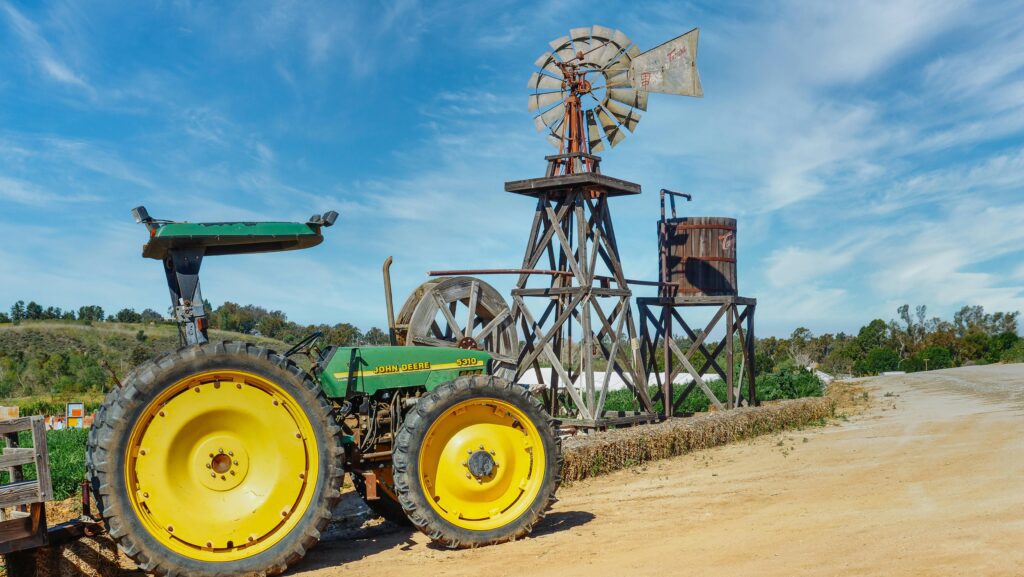
For big farmers who work on vast fields, farmer equipment such as rotary tillers saves time for preparing land and helps in maintaining an even soil texture. New tractors now even have hydraulic systems that allow for the easy attachment and use of tillers.
Spending money on a good-quality tiller guarantees the preparation of land for sowing well in advance, avoiding delays that may affect crop production.
5. Irrigation Equipment – Guaranteeing Water Efficiency
Water management is perhaps the biggest challenge in agriculture. Irrigation hardware like drip irrigation systems, sprinklers, and rain guns enables farmers to provide water directly to the roots of plants, reducing wastage.
These types of systems, apart from saving water, enhance plant and crop health and production.
Among modern equipment for farmers, irrigation machinery holds a special place because it directly addresses sustainability. Many new tractors also integrate pumps or portable irrigation systems, making water management more convenient.
While irrigation systems require initial investment, the savings on water bills and the boost in yield make them worthwhile. Farmers who adopt efficient irrigation also find it easier to cope with erratic rainfall patterns, ensuring crop survival even in drought-like conditions.
6. Threshers – Streamlining Post-Harvest Handling
Threshing refers to the operation of removing the grains from stalks, and manual methods are both labor-intensive and inefficient. Threshers, being farm equipment par excellence, mechanize the operation and effect clean separation with almost no loss of grain.
They are available in several forms such as pedal, engine, and tractor models.
When used with a harvester or even independently, threshers reduce labor expenses and accelerate post-harvest processing. Although prices of harvesters are normally compared, purchasing threshers independently is favored by many to fit within their budget.
This autonomy enables even small-scale farmers to mechanize important post-harvest operations without the substantial cost of a complete combine harvester.
7. Weeders and Sprayers – Healthy Fields
Weeds and insects are perennial threats to crops, and their control is crucial for healthy harvests. Sprayers and weeders are efficient farming equipment that reduces manual labor while providing improved crop protection.
Weeders eliminate weeds effectively, while sprayers evenly distribute fertilizers, pesticides, and herbicides over fields.
Farmers with new tractors tend to mount mechanized sprayers to rapidly cover more areas. This facilitates effective penetration of chemicals and minimal wastage. Farmers, by investing in these devices, not only gain time but also guard crops against pests and diseases, resulting in improved yields and revenues.
Small farmers can utilize low-cost manual weeder units, whereas big farms have the tractor-mounted versions, striking a balance between cost and efficiency.
Challenges Faced by Farmers in Adopting Advanced Equipment
Although advanced equipment for farmers has definitely revolutionized agriculture, its adoption poses challenges. Farmers, particularly in developing countries, are confronted with practical, financial, as well as technical challenges when adopting modern equipment.
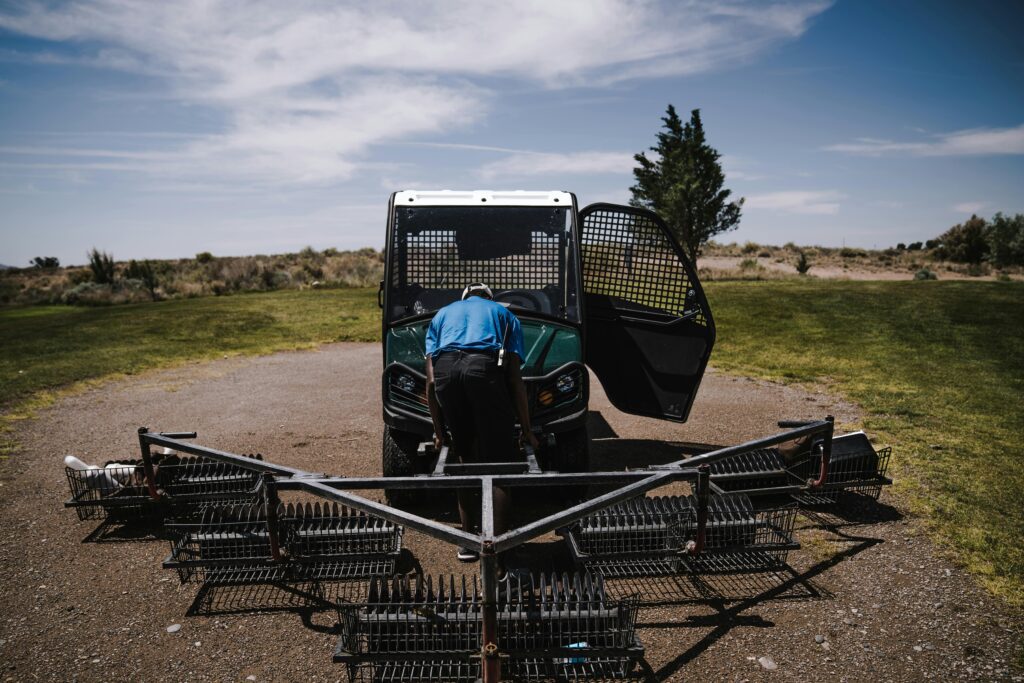
An understanding of the challenges will pave the way for solutions that can make technology available to every farmer.
1. High Initial Investment
The most frequent challenge is the high initial investment in machinery. For instance, a farmer considering a combine harvester may be deterred upon viewing the harvester cost, which can be in lakhs of rupees.
Despite the fact that these machines are worth the money in terms of saving time and labor expenses in the long term, numerous small and marginal farmers just cannot do without them due to lack of funds. New tractors with superior features also cost more than old ones, making them less accessible to some.
2. Lack of Awareness and Training
Up-to-date machinery needs proper knowledge and training to utilize effectively. Numerous farmers still stick with conventional tools since they are unaware of how to use and maintain advanced machines.
For example, a farmer who buys new tractors might not be fully knowledgeable about aspects such as GPS-guidance or hydraulic attachments, leading to decreased efficiency of the machine. In the absence of awareness campaigns, such investments do not yield maximum output.
3. Availability of Spare Parts and Maintenance
A second significant impediment is the price and accessibility of spare parts. Equipment such as harvesters, threshers, and irrigation pumps need to be serviced periodically. Service centers are commonly situated at great distances in rural areas, and spare parts are not always easily accessible.
This causes downtime during peak farming times, directly impacting productivity. Farmers who compute only the harvester cost prior to purchase sometimes fail to account for such hidden costs of ownership.
4. Fuel and Operating Expenditure
Even if farmers are able to purchase modern farm equipment for farmers, operating expenses could be an issue. Diesel-hungry machines such as tractors and harvesters use large quantities of diesel. With fuel prices constantly changing, the cost of running such machines can go up immediately.
While new tractors are being made to consume less fuel, operational expenses remain an issue, particularly for small farmers.
5. Landholding Patterns and Farm Size
In nations such as India, most farmers have small and fragmented pieces of land. It would not be feasible for such farms to invest in big machinery like combine harvesters. The cost of harvester could be reasonable for a large landowner, but for small farmers, the machine can be underutilized.
This imbalance tends to cause shared ownership or renting, but these situations also have drawbacks such as scheduling conflicts and depreciation of the machine.
6. Barriers to Credit and Financing
Although banks and government schemes provide credit for farm machinery, farmers find it difficult to get access to these facilities because of lack of documentation or awareness.
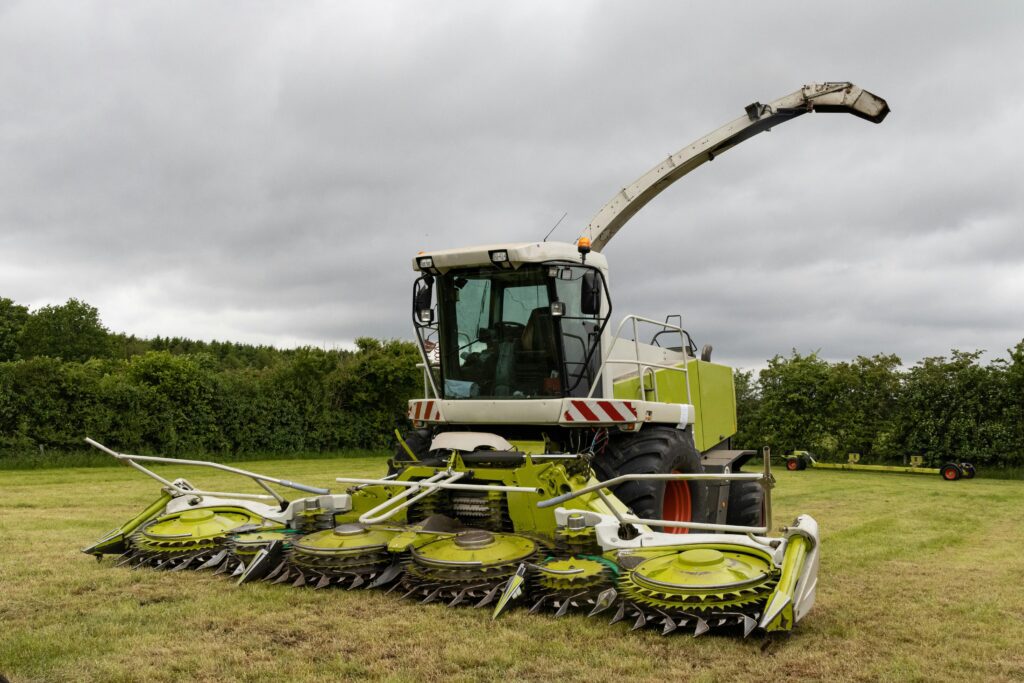
If there are long delays in sanctioning loans or high interest rates, farmers get disheartened and refrain from buying new tractors or sophisticated irrigation systems. Without proper financing, advanced equipment is beyond the reach of many who most need it.
7. Resistance to Change
Lastly, there is resistance of a cultural and psychological nature. There are some farmers who resist substituting conventional practices with machines through apprehension towards risks or skepticism about gains.
The resistance retards the implementation of advanced equipment by farmers, though its benefits in efficiency and productivity are obvious.
Solutions: Overcoming Barriers to Farm Mechanization
In spite of the limitations, the advantages of contemporary equipment for farmers greatly exceed the disadvantages. To make it possible for even marginal and small farmers to adopt these tools, a mix of financial, pedagogical, and technical solutions needs to be deployed. Let’s examine some realistic methods by which the gap can be closed.
1. Government Support Schemes and Subsidies
One of the most viable means of making equipment affordable is through government-sponsored loans and subsidies. States already sponsor financial assistance for farmers to buy new harvesters and tractors.
For instance, government programs for farm mechanization have the government reimbursing a proportion of the cost of the equipment or facilitating low-interest loans.
By minimizing the initial cost burden, even small farmers can opt for buying sophisticated equipment without being dissuaded by the harvester price.
2. Custom Hiring Centers (CHCs)
For small landowners, purchasing big machines such as harvesters might not be feasible. Custom Hiring Centers address this issue by enabling farmers to hire equipment on demand. Rather than having to pay for the entire harvester, they can just pay for usage in hours.
It is such a popular model in most of the rural areas, where sets of farmers share tractors, threshers, and irrigational equipment without much investment. CHCs ensure that mechanization benefits come to the majority
3. Training and Awareness Programs
Even the most excellent machines fail if farmers are not given proper training to use them. Farmers are made aware of using and servicing contemporary farming equipment through regular training sessions, workshops, and demonstrations.
Manufacturers of new tractors and harvesters usually perform field demonstrations to inform buyers. Farmers learn how to push machine performance to the limit and make higher profits by learning about advanced features like GPS guidance or fuel-saving methods.
4. Cooperative Ownership Models
In areas with broken landholdings, cooperative ownership is also a potent option. Farmers can form groups and save to jointly acquire costly equipment such as harvesters or irrigation systems. Rather than one farmer paying the entire price of the harvester, many pay for it.
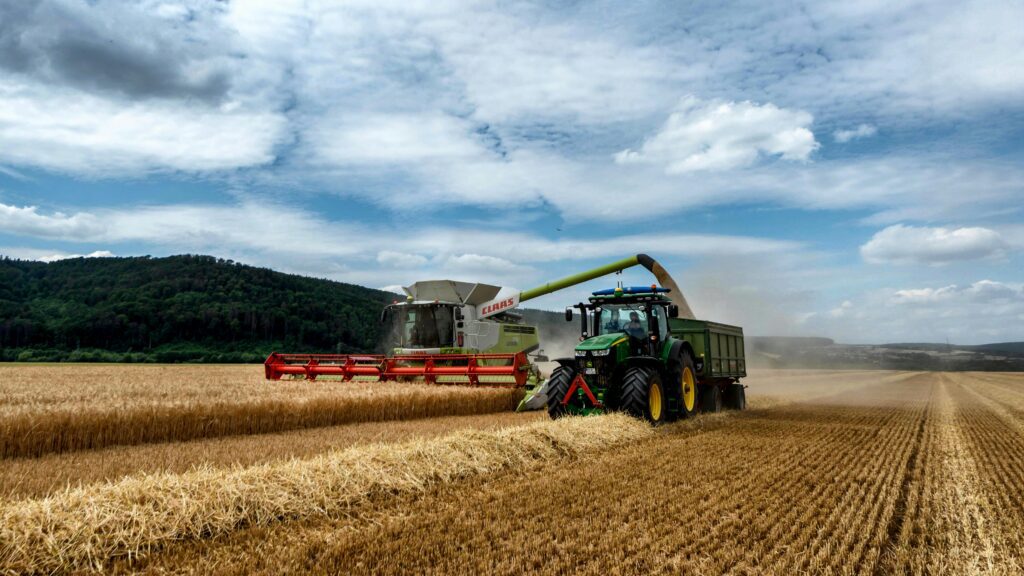
Cooperative ownership also promotes shared maintenance, making sure the machines last longer.
5. Affordable Financing and Micro-Credit Options
Banks and rural credit cooperatives can make a significant contribution to reducing financial constraints. By providing simple repayment terms, seasonal EMI plans, and crop-linked loans, they can bring new tractors and other equipment within reach.
Micro-credit agencies and self-help groups can assist marginal farmers who cannot provide documents for formal bank credit. Flexible finance allows farmers to invest in machinery without disturbing their livelihood.
6. Local Manufacturing and Service Centers
Bringing in sophisticated machines tends to be costly and restricts access to spare parts. Promoting local production of machinery for farmers not only reduces prices but also facilitates prompt servicing and convenient access to parts.
Numerous tractor and harvester brands have already established service stations in rural towns to minimize downtime during peak cropping seasons. Availability locally also enables farmers to more effectively compare prices of harvesters and select models that fit within their budget.
7. Encouraging Low-Cost and Eco-Friendly Innovations
Low-cost innovations can also be a huge game changer for farmers who cannot afford heavy machinery. Light weeders, solar irrigation pumps, and mini-tractors are some of the innovations specifically for small and marginal farmers.
Most new tractors now come in smaller sizes to accommodate small fields, making them affordable and efficient without sacrificing functionality. These innovations also encourage sustainable agriculture by saving fuel and water.
FAQs on Farm Equipment for Farmers
1. What are the most significant equipment for farmers these days?
The most significant equipment for farmers are tractors, combine harvesters, seeders, ploughs, irrigation systems, threshers, and weeders. Of these, tractors continue to be the backbone since they facilitate multiple farming operations.
In the meantime, harvesters provide speed and efficiency in cutting crops, and irrigation systems ensure water efficiency. It all depends on farm size, crop type, and budget when selecting the right tools.
2. What is the impact of harvester price on small farmers?
Harvester price is usually a significant issue for marginal and small farmers. As combine harvesters may be expensive, most farmers are unable to afford them in full. But with the availability of rental services and government subsidies, harvesters have become more affordable.
Small farmers can also choose cooperative ownership schemes in order to share the cost and yet enjoy the benefits of mechanical harvesting.
3. Why are new tractors superior to old tractors?
New tractors have improved features like fuel efficiency, environment-friendly engines, hydraulic attachments, and GPS guidance. These features lower the cost of operation and yield higher productivity than older tractors.
Although older tractors will cost less initially, they require higher maintenance, so it is a better long-term choice for farmers to purchase new tractors.
4. How can farm equipment enhance crop yield?
Modern equipment for farmers improves crop yield by ensuring precision at every stage. Seeders and planters guarantee proper seed placement, irrigation systems deliver water directly to the roots, and harvesters reduce grain loss.
Together, these machines minimize errors and wastage, helping farmers produce higher-quality crops and achieve better yields season after season.
5. Is it better to buy or rent farming equipment?
Buying versus renting also varies with farm size and economic status. Larger landholders can own machinery such as new tractors or threshers since they can use them frequently.
Small farmers will find it cheaper to rent huge machines such as harvesters since they will save the cost of the whole harvester but benefit from mechanical farming nonetheless.
Conclusion
Farming has never been an easy job, but contemporary farmer machinery has made it a faster, more lucrative, and greener activity. From multi-purpose new tractors that do several jobs to heavy-duty harvesters that reduce losses and save time, every machine is important in enhancing productivity.
Precision equipment such as seeders, ploughs, and irrigation systems guarantee that agricultural operations are performed accurately, and threshers and weeders make post-harvesting and field maintenance operations easier.
Combined, these seven machines tested are the cornerstone of mechanized agriculture.
Challenges do exist. The harvester price and the high initial cost of machinery can deter marginal and small farmers. Solutions like government subsidies, cooperative ownership, and rental services have made access easier for farmers.
Additionally, training programs and awareness campaigns help farmers use these machines efficiently and maintain them well for long-term gains.
The future of agriculture is in embracing sustainable methods balancing profit with responsibility to the environment.
Most new tractors and equipment now come equipped with environmental-friendly engines, fuel efficiency, and water-conserving technologies so that farming is not only more productive but also more responsible to nature.
If you are a farmer looking to upgrade your equipment, begin by determining your land area, crop needs, and budget. Research the prices of harvesters in your area, learn about government subsidy schemes, and find out if renting or cooperative ownership would be more suitable for you.
Upgrading to quality equipment for farmers is not only about maximizing yields; it is about guaranteeing your income, conserving time, and future-proofing tomorrow’s agriculture.
The choice is clear — modernize your farming practices, embrace the benefits of proven equipment, and take your agricultural journey to the next level. By doing so, you not only enhance your income but also contribute to the long-term growth and sustainability of the farming community.
